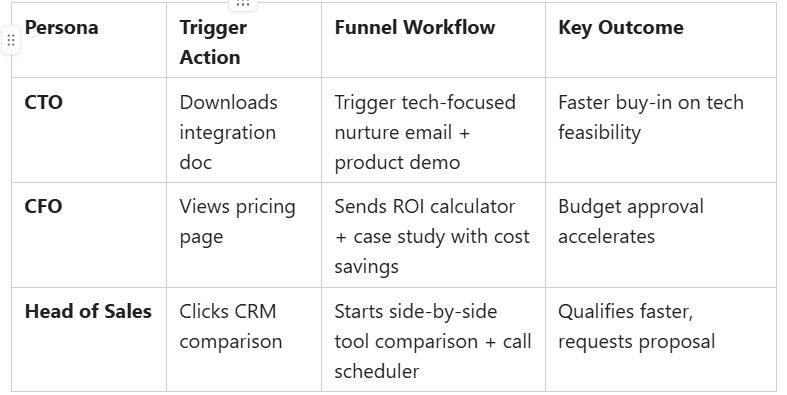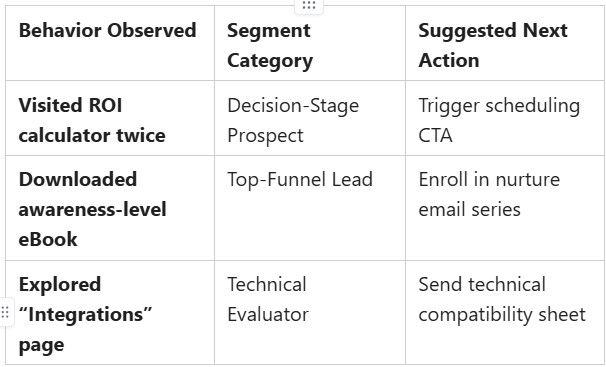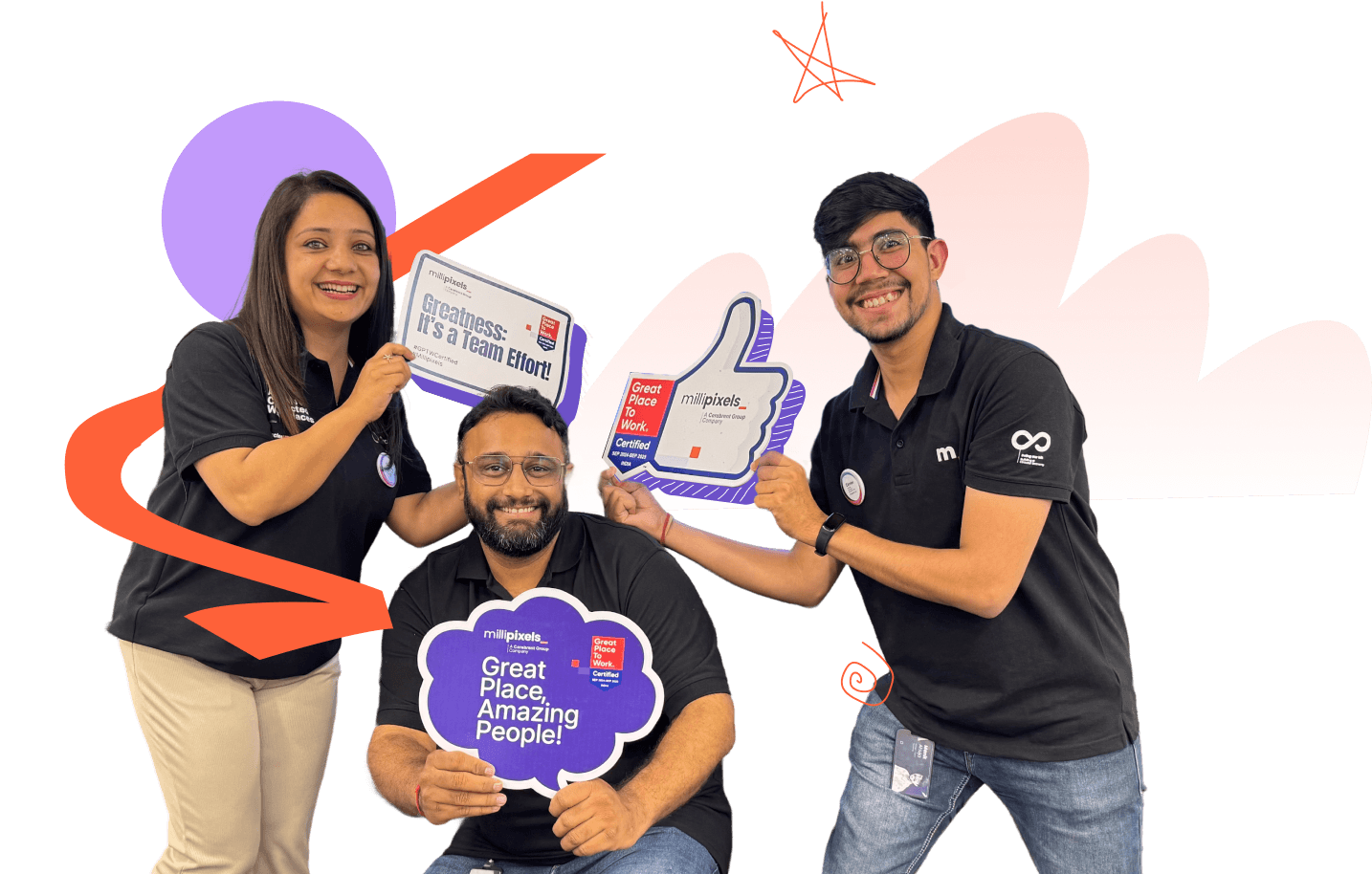Blog
7 Ways Custom Web Application Development Streamlines Your B2B Sales Funnel
Explore 7 proven ways custom web application development services can streamline your B2B sales funnel, improve lead quality, and boost conversion rates.
May 27, 2025

The Case for Custom Web Application Development
Most B2B businesses aren’t losing deals because they lack leads. They're losing deals because the sales funnel is rigid, disconnected, and built on tools that weren’t designed for them. Off-the-shelf CRMs and automation tools work up to a point—but when your sales cycles are long, layered with stakeholders, and depend on deep nurturing, these generic solutions create bottlenecks, not breakthroughs.
Custom web application development offers a game-changing alternative. Built for your funnel, your team, and your customers, they become the operating system that turns slow, leaky sales processes into precision engines.
Let’s explore 7 proven ways custom web applications can help you streamline your B2B sales funnel.
1. Build Micro-Funnels for Different Buyer Personas
Traditional funnels treat all leads the same, regardless of company size, buying power, or role. That’s a fatal flaw in B2B. Your CTO prospect wants technical documentation. Your marketing lead wants case studies. Your procurement officer wants numbers. If your funnel doesn’t deliver the right asset at the right stage, the lead slows down—or drops off entirely.
A custom web-based application gives you the ability to:
- Tag leads based on firmographics (industry, company size) and behavior (pages visited, CTA clicked).
- Serve dynamic workflows that change based on user persona.
- Automate nurture journeys tailored to decision-making roles (e.g. tech-focused for engineers, cost-focused for CFOs).
Here’s how that might look:

Takeaway:
Audit your current funnel stages and segment them by buyer roles—not just company size or job title. Use a web-based application to deliver auto-personalized content (like ROI calculators for CFOs or demo videos for engineers) triggered by user behavior.
2. Turn Sales Playbooks into Interactive, In-App Tools
Let’s be honest: most sales playbooks are buried in Notion docs or PDFs—and reps glance at them once during onboarding. The problem isn’t the playbook. It’s the format. By embedding your playbook logic into the workflow itself using a custom app, you make it usable in real time, during real calls.
Here’s what that could look like:
- A rep clicks on a lead profile and sees a script dynamically built based on deal size and industry.
- While chatting with a client, an objection pops up—instantly, the app feeds a pre-approved response.
- A proposal tool auto-selects pricing tiers based on use-case selected during lead intake.
This isn’t just automation. It’s empowering your team to make better decisions in the moment—without pausing to dig into a manual.
Takeaway:
Convert your top-performing sales scripts and objection handling responses into clickable in-app prompts that appear contextually inside your CRM or deal-tracking tools. Start with one use case—like demo call prep—and measure its impact on rep confidence and first-meeting-to-next-meeting conversion rates.
3. Detect Stalled Deals with a “Deal Delay Detector”
In B2B, silence is more dangerous than rejection. A ‘no’ gives you closure. A ‘maybe’ that drags on? That kills your pipeline velocity. Yet most teams only notice ghosted leads after it’s too late. With a custom web application, you can create a Deal Delay Detector—an internal system that flags and escalates signs of friction early.
It works by monitoring:
- Last engagement (email reply, meeting, proposal view).
- Page behavior (e.g., visits pricing but doesn’t convert).
- Inactivity duration based on deal stage (e.g., >7 days idle post-demo).
Once triggered, the app can:
- Nudge the assigned rep with a reminder or next-step suggestion.
- Launch an automated “breakup” email sequence.
- Notify sales leaders about critical pipeline slowdowns.
Takeaway:
Set up deal-aging thresholds inside your custom app (e.g., auto-flag deals with no activity for 5+ business days). Configure the app to push reminders to reps or launch a recovery email flow. You’ll prevent deals from falling through the cracks and recover at least 10–15% of stuck pipeline with timely re-engagement.
4. Auto-Segment Leads Based on Behavior, Not Just Forms
Traditional methods that rely on form fills or job titles are limited and often misleading. Modern B2B buyers leave digital footprints that offer far richer insights—if you know how to track and interpret them. A custom web-based application can automatically segment leads based on their behavioral data, like time spent on product pages, actions taken within interactive demos, or the sequence of resource downloads.
By incorporating behavioral triggers, your application can accurately identify intent levels and direct users through funnel stages with precision. For instance, leads who revisit your pricing page multiple times in a week likely need sales intervention, while those consuming early-stage content may be ripe for nurturing.

Takeaway:
This kind of intelligent segmentation boosts sales efficiency, enhances personalization, and ensures that no lead is left behind or misclassified. It allows you to focus energy where it's needed most—automatically and at scale.
5. Pre-Qualify Leads Using Smart Onboarding Flows
Not all traffic deserves the same level of sales attention. Many B2B sales teams get bogged down with discovery calls that lead nowhere. With a smart onboarding flow built into your custom web application, you can front-load that discovery process. Using conditional questions and logic trees, you can route leads based on their actual needs, budgets, roles, and buying timelines.
Think of it like a digital sales assistant, asking the right questions, qualifying the lead, and surfacing only the highest-potential opportunities for human follow-up. This reduces the back-and-forth, shortens the sales cycle, and creates a smoother experience for both parties.
You can also route different personas to different product tours or demo content. For instance, technical leads can be taken directly to the features page, while business users are shown ROI and success stories.
Takeaway:
With smart onboarding flows, you filter out poor-fit leads before your sales team spends a minute on them. The result? Higher-quality conversations, faster velocity, and a better use of team bandwidth.
6. Auto-Sync Buyer Insights Across Teams
Sales teams often suffer from information silos. A lead tells marketing their pain point in a form, then reveals new objections to sales, and later shares buying hesitations with customer support. But unless those insights are manually logged and shared, they vanish. This breaks continuity and often results in a disjointed buyer experience.
With a custom web-based application, you can eliminate that loss of data. Every action a lead takes inside your app—from downloading a case study to customizing a solution via a product builder—can be automatically logged and synced across your CRM, sales pipeline, and internal channels. This creates a dynamic, always-updated profile of the lead that all teams can access.
Takeaway:
Auto-synced insights create better internal alignment and eliminate repetition in sales calls. This unified visibility enables more effective outreach and a smoother handoff between marketing, sales, and customer success teams.
7. Deliver Personalized Nudges Based on Funnel Stage
B2B sales often stall not because of disinterest, but because the prospect hasn’t seen exactly what they need to feel confident. One of the biggest advantages of a custom web-based application is the ability to push contextual, personalized nudges that are relevant to a prospect’s current funnel stage.
Let’s say a lead is stuck at the pricing stage. Your app can automatically present ROI benchmarks or industry-specific cost comparisons. If a lead hasn’t booked a demo after viewing multiple product pages, the system can push a short “demo preview” video or case study relevant to their industry. These nudges are delivered automatically based on time delay, behavior, or skipped steps, keeping leads warm without sales intervention.
This proactive nudging system transforms your sales funnel from passive to persuasive. It reduces follow-up fatigue and gives leads a reason to re-engage, without requiring extra effort from your team.
Takeaway:
Automated, behavior-based nudges help revive cold leads, push deals forward, and reduce friction throughout the funnel. The key is to personalize based on timing and intent, not guesswork.
Build a Sales Funnel That Works for You, Not Against You
The modern B2B sales funnel is no longer a straight path — it’s a winding journey full of stops, restarts, objections, and decision-makers with different needs. A custom web-based application isn’t just a nice-to-have; it’s the engine that can streamline, scale, and personalize every part of that journey.
From identifying buyer personas in real time to automating lead qualification and nudging stuck deals across the finish line, the right custom application turns sales from reactive to strategic. It gives your team clarity, consistency, and control over the funnel—without doubling your headcount.
If your current funnel feels like it's leaking leads or stuck in limbo, it’s time to rethink the tools behind it. With a tailor-made solution, you don’t just adapt to buyer behavior—you shape it.
Let’s talk about how we can build a custom web-based application tailored to your unique sales cycle.
Frequently Asked Questions
What is custom web application development?
It is the process of designing and building web applications specifically tailored to a business's unique needs, workflows, and user experiences.
How does custom web application development improve B2B sales?
It enables tailored automation, personalized lead journeys, better segmentation, and real-time decision support, all of which streamline and accelerate B2B sales.
What are the benefits of using a custom web application over generic tools?
Custom applications eliminate inefficiencies, reduce friction, and integrate seamlessly with your internal processes, unlike off-the-shelf tools that force workarounds.

Parthsarathy Sharma
B2B Content Writer & Strategist with 3+ years of experience, helping mid-to-large enterprises craft compelling narratives that drive engagement and growth.
A voracious reader who thrives on industry trends and storytelling that makes an impact.
Share
Are you seeking an exciting role that will challenge and inspire you?

GET IN TOUCH